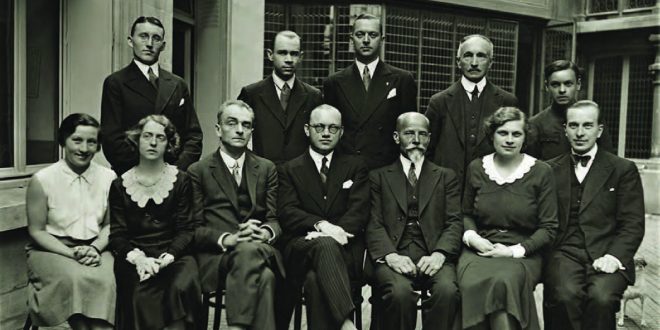By Miltiades Varvounis.
After the last partition of the Polish-Lithuanian Commonwealth in 1795, the Grand Duchy of Lithuania was annexed by the Russian Empire. However, the Lithuanian national revival emerged during the late 19th century and the movement to establish an independent nation-state intensified during the early 20th century. During World War I (WWI), Lithuanian territory was occupied by the Germans from 1915 until the war ended in November 1918.
On February 16, 1918, the Council of Lithuania declared the re-establishment of independence from all previous legal bonds with other states. Nevertheless, Lithuania was forced to defend its independence at the end of World War I: against Bolshevik forces (December 1918 – August 1919) and against Poland (August 1920 – November 1920). The conflict with Poland concerned territorial control of the Vilnius region, including the town of Vilnius, as well as the nearby Suwaki (Suvalk.) region, including the towns of Suwaki (Suvalkai), August (Augustavas), and Sejny (Seinai). A large portion of the Vilnius area had a significant Polish speaking population, descendants of Polonized Lithuanians. According to a 1916 German census, inhabitants living in the city of Vilnius included 50% Poles and 3% Lithuanians. However, there were Poles-Lithuanians who despite their Polonized culture, felt Lithuanian and supported the idea of a Lithuanian state that would also include Vilnius as its capital. Strangely enough, this conflict actually had a brother against brother character, in which loyalties and military service were divided between Poland and Lithuania.
The Case of Stanisław Narutowicz (Stanislovas Narutavičius)
Stanisław Narutowicz (Stanislovas Narutavičius) was a notable Polish-Lithuanian personality who chose to be loyal towards the Lithuanian state. Brother to the first president of Poland, Gabriel Narutowicz, Stanislaw was a self-declared Lithuanian, Samogitian and Pole. He was the only Polish speaking Lithuanian member of the Taryba, the provisional Lithuanian parliament formed in the last stages of WWI. Unlike his brother, Stanisław was from a young age a supporter of independence for Lithuania rather than for restoring a Polish-Lithuanian Commonwealth according to the wishes of Jozef Klemens Pilsudski, a Polonized Lithuanian noble and statesman.
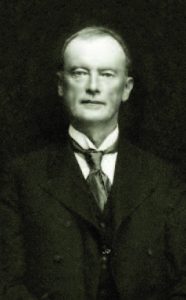
He was also one of the leaders of the krajowcy movement, a group of Polish Lithuanians loyal to the legacy of the GDL (Grand Duchy of Lithuania), who supported reconciliation of divided loyalties of the Poles of Vilnius between Poland and Lithuania. In his vision, the Polish speaking citizens of Lithuania should gain a status similar to the Walloons in Belgium: with separate traditions and language, but united with Lithuanians by what he called “state patriotism.” Paul Hymans, the Belgian representative at the League of Nations, shared Stanisław’s vision when he chaired the negotiations between Lithuania and Poland about the matter of then Polish-occupied Vilnius. In May of 1921, he suggested a plan by which Lithuania would recover its capital city, but become a federal state made up of 2 cantons – Vilnius and Kaunas. This Lithuanian federal state would be closely linked with Poland, having two official languages – Lithuanian and Polish. However, Hyman’s plan was rejected by both countries and it remained only a footnote in the history of Polish-Lithuanian relations.
Despite the tense relations between the two countries, Stanisław continued to actively support a rapprochement, but met with little success. For that reason he became depressed and committed suicide on December 31, 1932 in Kaunas. The priest Mykolas Vaitkus from Telšiai wrote the following about Stanislaw: “friendly, good-natured, very active; however, an unpractical, dreamer, social-democrat, ready to make the lives of the poor better, even at the cost of giving his manor to the people.” Undoubtedly, Stanisław Narutowicz was the last knight of the GDL, a person who could not reject his dual loyalties for the sake of nationalistic hysteria at that time.
Brothers, Cousins, and Families Divided
Oskar Miłosz (Oskaras Milašius) was another Polish speaking ethnically Lithuanian, who chose to identify himself with the newly formed Lithuanian state. Distant cousin of Polish writer Czesław Miłosz (winner of the Nobel Prize for literature in 1980), Oskar was a cosmopolitan poet who lived in France during World War I. Until 1918 he knew nothing of the Lithuanian national movement but became angered when he discovered that the nationalistic Poles, the followers of Roman Dmowski, refused to acknowledge Lithuania’s independence. It was then that he renounced his Polishness and cut ties with Poland, choosing to be a loyal Lithuanian, even though he did not yet speak Lithuanian, because Lithuania had been the original homeland of his ancestors since medieval times. In 1920, when France recognized the independence of Lithuania, Miłosz was appointed Chargé d’Affaires for the new state. During the inter-war period, Miłosz learnt Lithuanian and published a several works about Lithuania (his most notable writing about his ancestral home land was Lithuanian Tales, published in 1933). Miłosz died at the age of 61, a few months before the outbreak of World War Two (WWII), and was buried at Fontainebleau in France.
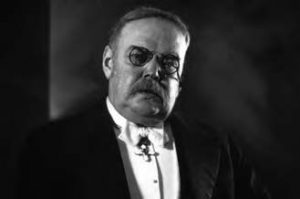
Michał Pius Römer (Mykolas Römeris) was born in Bagdoniškis into a Polish gentry family. He knew Lithuanian as a child, and in 1905 he became enchanted with Lithuania’s national revival, claiming to a friend: “For the first time I clearly felt that this is a purely Lithuanian country, that its indigenous society is Lithuanian… Today Lithuania is no longer a trifle, not just a historical name, it has its own body and being.” In 1908 he wrote in Polish, Lithuania: Study of national revival. During WWI Römer became a member of Piłsudski’s Polish legions, but broke with the Polish side when Vilnius was occupied by the Poles in 1920. For that reason he moved to Kaunas, becoming a notable member of the Lithuanian Supreme Tribunal (1921–1928) and the State Council of Lithuania (1928–1931). He was one of the most prominent Lithuanian jurists, the progenitor, first lector and one of the most prominent authors of interwar Lithuanian constitutional law. During the German occupation of Vilnius in WWII he tried to organize Polish and Lithuanian resistance contacts. He died in his beloved Vilnius in 1945 at the age of 65. Despite being a Pole in terms of culture and language, he chose to serve Lithuania, having good intentions as a mediator between Lithuanians and Poles. Today, he holds an honorable place in the history of Lithuania, Vilnius and Kaunas.
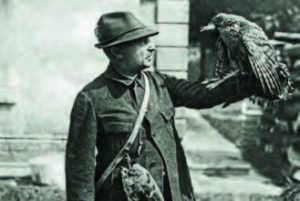
Another interesting case of a Polonized Lithuanian who had to choose between Lithuania and Poland was that of famous zoologist Tadas Ivanauskas (Tadeusz Iwanowski). Born in Lebiodka of today’s Belarus, into a Polonized noble family loyal to the heritage of the Grand Duchy of Lithuania, he initially did not know to speak Lithuanian. While his brothers chose to identify themselves with Poland, Ivanauskas considered himself to be Lithuanian, and dedicated his life to the newly reestablished country. He opened the first Lithuanian school with his wife in 1918. There was a noted episode during the unfortunate Polish-Lithuanian War, when during a ceasefire, one of his brothers transferred Tadas’ taxidermy collection through the front line into Kaunas. Ivanauskas founded the Zoological Museum in 1919, and the Kaunas botanical garden in 1923. In 1929, Ivanauskas opening one of the first bird banding stations in Europe, at Vente Cape. In 1938 he opened the popular Kaunas Zoo – one of the oldest scientific zoos in Eastern-Central Europe.
Donat Malinowski (Donatas Malinauskas) was born into a Polonized noble family. After graduation, he returned to his native homeland Lithuania, engaging passionately in defense of the Lithuanian language in public life and in the Church. He voted for the Act of Independence of Lithuania in 1918, which led him to cut any ties with Poland.
Andrzej Rondomański (Andrius Rondomanskis) was another Lithuanian by choice. He was one of the cofounders of the Vilnius Liberation Union (ZWW-Związek Wyzwolenia Wilna) and from 1928 he hosted Polish radio programs broadcast in the Polish-occupied Vilnius region. Rondomański’s brother – Dr. Stanisław Rondomański, a captain and doctor in the Polish army – lived close to Vilnius. After one of Andrzej’s broadcasts, his brother sent a letter to the Polish media in which he wrote: “I, brother of Andrzej Rondomański, deeply affected in my most sacred national feelings, publicly condemn his broadcasts and break all family relations with him.”
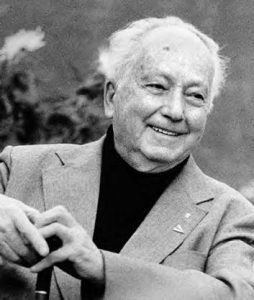
A similar case was that of Michał Kwinto. After the Polish occupation of Vilnius, he settled in Samogitia, where he strictly informed his family that only Lithuanian would be spoken at home. At that time, his brother Henryk lived in Warsaw and rejected any further communication with his “apostate” brother.
Alfred Tyszkiewicz (Alfredas Tiškevičius) was another nobleman who supported the Lithuanian national movement. He represented Lithuania at the Paris Peace Conference in 1919 and was appointed Lithuanian minister to the United Kingdom (1920–21). His relative, Aleksander Tyszkiewicz, a landowner in Kretinga, also followed in Alfred’s footsteps in regards to loy.alty to Lithuania.
From the notable Lithuanian noble Radvila family, Konstanty Radziwiłł (Konstantinas Radvila) chose to be a citizen of Lithuania instead of Poland, becoming during the interwar period the honorary commander of the Jonušas Radvila Training Regiment.
Nobleman Vytautas Landsbergis-Žemkalnis became attached to the Lithuanian cause of independence thanks to the efforts by his Polish-speaking father, Gabrielus (the founder of Lithuanian professional theater). During the interwar period he was one of the most prominent architects in the coun.try. Today, he is most well-known for being the father of Lithuanian independence fighter and politician Vytautas Landsbergis – the first head of state of reconstituted Lithuania from 1990 to 1992.
Supporting Lithuania’s Independence
Of course, most Polish-Lithuanians living in the Vilnius area decided to remain in Poland, but a few notable intellectuals were supporters of Lithuanian independence, while some dared to promote the anti-Polish idea, that the Polish-occupied Vilnius region should be transferred to Lithuania, with cultural autonomy for its Poles. Such was the case of Ludwik Abramowicz-Niepokczycki, publicist of pro-Lithuanian newspapers Gazeta Wileńska and Przegląd Wileński. Many times his articles caused anger among the Polish authorities in Vilnius and it was he who delivered a speech at Jonas Basanavičius’ funeral.
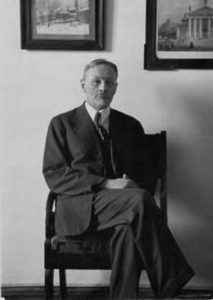
Tadeusz Wróblewski (Tadas Vrublevskis) became notorious in interwar Poland for his pro-Lithuanian activities. A lawyer born into a noble family in the Vilnius region, Wróblewski defended without charge, Lithuanian activists who had been arrested by the Polish authorities in the early 1920s. In 1922, Wróblewski was unanimously elected as an honorary member of the Lithuanian Science Society, and he would present lectures to the Society at Kaunas.
The famous Polish-Lithuanian architect Antoni Wiwulski (Antanas Vivulskis) was also sympathetic to the Lithuanian cause for freedom. He took part in the defense of Vilnius against Bolshevik assaults in the early stages of the Lithuanian-Soviet War. Unfortunately, he died of pneumonia shortly thereafter, in 1919.
Finally, Tadeusz Dowgird (Tadas Daugirdas), a painter and archaeologist born into a noble family, did not hesitate to abandon his Polishness by becoming involved with the Lithuanian national movement. In 1917, he participated in the commission that designed the Lithuanian flag, with his plans for the color yellow to join the triband being accepted, together with its originally proposed red and green color bands.
The Polish-Lithuanian rivalry over Vilnius after the end of WWI was a messy affair. It broke down families, pitting brother against brother as each rallied to the flag of the cause that captured his heart. Professor Stanisław Swianiewicz (he was the only Polish officer who survived the Katyn massacres in 1940) remembered once how they approached a wounded Lithuanian soldier with his friend during the Polish-Lithuanian war: “When we tried to pick him up, he moaned: – ‘Oh, Jesus’ (in Polish)! It made a terrible impression on us. Until now, we have been fighting against the Bolsheviks… And here is the fratricidal war.” My friend, who was awarded the Virtuti Militari for his heroism in the Battle of Warsaw (1920), told me then: “You know, I’m switching sides, I’m a Lithuanian.”
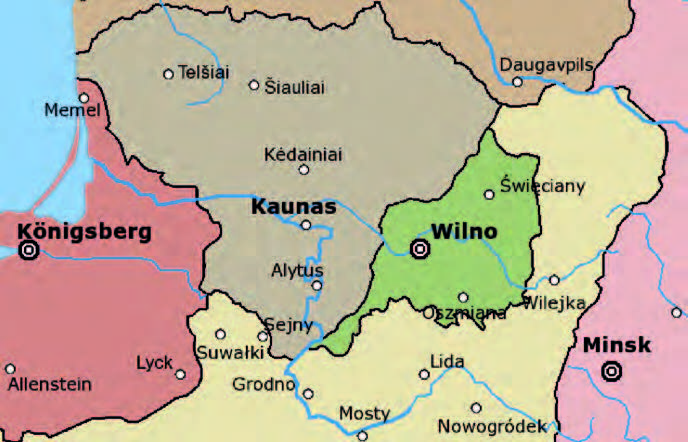
 DRAUGAS NEWS Lithuanian World Wide News in English
DRAUGAS NEWS Lithuanian World Wide News in English
